By Graham Earl
Bizzarrini Lamborghini
One interesting car which came and went through my hands while working for auction companies was a prototype for the America, based on a Lamborghini 350GT. The story, which came directly from Giotto himself, is that after designing the V12 engine for Lamborghini he somehow ended up with a rolling chassis for a 350GT, possibly as part payment. He used this chassis to develop the car, which would become the America. I believe this is the only genuine Bizzarrini GT with a Lamborghini V12 motor, although I think another copy exists somewhere.
Giotto has hinted that his V12 Lamborghini engine design was poached from Ferrari, for whom he had drafted a Grand Prix engine just before his departure in the “palace revolt”. He took his drawings to Ferruccio, enlarged the capacity and produced a 3.5 liter, 360bhp thoroughbred motor, which actually had to be detuned for use in the road cars. The engine in the America prototype was apparently a very highly tuned race unit, which had been fitted with Lucas fuel injection, but was now back on Weber carburetors.
Certainly the car was very fast, and loud. The exhaust pipes exited below the sills on each side, forgoing the bother of fitting silencers! I had some new rear-exiting pipes constructed, with some rudimentary silencing, which made it more tolerable, though still very loud.
Another of Giotto’s own cars came my way, purporting to be a development mule which he had always kept, long after going out of business and ceasing production. I found this car almost impossible to drive, not just because it was in such poor mechanical condition (I could run one lap of the test track at a time because it would overheat after that) but because it was impossible for me to fit into it.
This car had an experimental rear suspension, and the floorpan was altered to accommodate it, leaving no room for the driver’s seat to move backwards. It was fine for anyone less than 5?10?, but I felt and looked like some crazy cartoon character out of Wacky Races trying to fit behind the wheel. That car was sold to someone who turned it into a very potent race car, but the car was comprehensively altered from the original design.
Another competition Strada was arguably the best one I have experienced, this being a thoroughly sorted and beautifully prepared car. It came from the collection of a very well respected fashion designer, but didn’t stay for long. It was a car you would want to have in your collection because it was so nice.
Conversely, it was unlike the one I drove from Marseilles to Lausanne for a friend. Leaving the city early in the morning I got snarled up in heavy traffic which caused overheating, firstly of the car, then me. Waiting by the roadside for the car to cool down I learned that the French don’t like to stop to offer assistance, but they do like to hoot their horns and laugh at your misfortune. Once back on the road it took no more than half an hour for the temperature to rise again, so it was clear that I wouldn’t make it to Switzerland.
I stopped at a garage, where the proprietor couldn’t do enough for me. He loved the car and just wanted to work on it, looking for faults to fix, just to keep it in his garage a little bit longer. As a measure of the effect a Bizzarrini has on people, this traditional old French mechanic even missed his lunch to finish working on the car. He told me that in 40 years he had never once failed to go home for his lunch, and that his wife would wonder what had happened to him, and was sure not to believe him when he told her what he had been working on that day.
Eventually I got going, and for a while I could experience exactly what Giotto had set out to create – a superb, fast GT car, capable of covering long distances at high speed. I couldn’t claim that it was comfortable, but it was fast. How fast I don’t know, because the speedo had stopped working just before the first breakdown, but I passed a Porsche 911 Turbo which gave chase enthusiastically until fading back behind the Strada. At these speeds, well north of 150 mph, the car tracks well and runs true, contrary to reports I’ve read about them being light at the front. Just when everything seemed to be going so well a misfire called a halt to my progress, and I had to stop again to fit a new condenser. Once running all seemed fine again, until the new condenser failed, the cause of which was diagnosed as a faulty voltage regulator. Finding a replacement would take time, so I had to stop for the night. The next day, up and running again I lasted a couple of hours before rain necessitated the use of the windscreen wipers. One sweep was all they managed before the fuse blew. With the fuse replaced another try saw the same result. Answer? Wait for the rain to stop. Which it did eventually, and I was able to complete my journey. I came away thinking this could be a great GT car, but it was let down by stupid trivial things like poor electrics, uncomfortable seats and lack of heat dissipation, all things which could be easily fixed.
The Strada’s real speed was shown when I raced one at Monza. I had never so much as sat in this particular car before, and with no testing behind me it was a baptism of fire, but I got on ok with it. The thing was like a ballistic missile on the straights, but slowing it down left a lot to be desired. Warped discs didn’t help, but even without this small issue, braking performance didn’t match engine performance. Reputedly, the engine was churning out 500 bhp. Handling was great and I brought the car home third, behind a GT40 and a wonderful Lotus 26R, which I was pretty pleased with in the circumstances. The car was well ahead of a 250 GTO and a couple of SWBs, so Giotto seems to have got it right and built a GTO-beater. The team calculated that the car was pulling 187 mph at one point on the track.
One day in Europe I happened upon a very nice early aluminum bodied Strada. This was a well-preserved original car, which was potentially for sale, and there was something I found highly appealing about it. It just seemed to have an indefinable something which greatly attracted me to it. Certainly I had no doubt about its authenticity, and I dug a little deeper to find out about its past history. Not much digging was necessary to uncover what was so appealing about it. It was the very same metallic blue car I had first clapped eyes on and stopped me in my tracks all those years ago in London.
I had two Series II cars, one royal blue and one silver, and apart from different seat covers and a new dash layout I don’t remember any changes. Having said that, no two Bizzarrinis ever seemed to be the same.
One diversion was a Europa, which I brought back to Europe from California. This baby Bizzarrini had all the style of its larger brother, but with an Opel 1900cc four cylinder engine. In some respects the smaller size of this car imbued it with a prettiness that is absent in the Strada and America. The example which I imported claimed to be a time warp example, original in every respect, and with only 4,000kms on the clock. Sure enough, the car was in nice condition, and went on to become part of an extensive European collection, where it joined examples of its larger-engined brethren.
I have been fortunate to have firsthand experience of several very significant Bizzarrinis, including a P538 with a Lamborghini V12 engine. There always seems to be disagreement about how many such cars were built. I think the truth is either one or two, although there are a few replicas floating round now. Even rarer were the Duc d’Aosta P538 Coupe, which I tried to buy, and the Manta (another 538-based car), but these special cars deserve a story on their own.
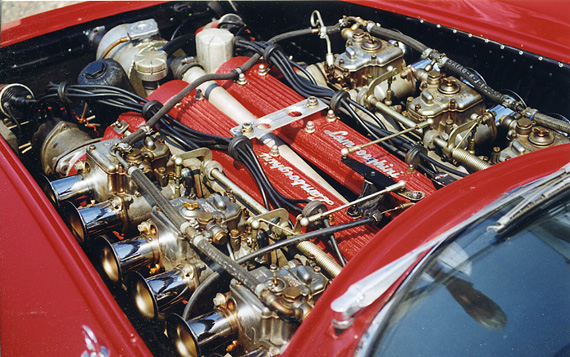
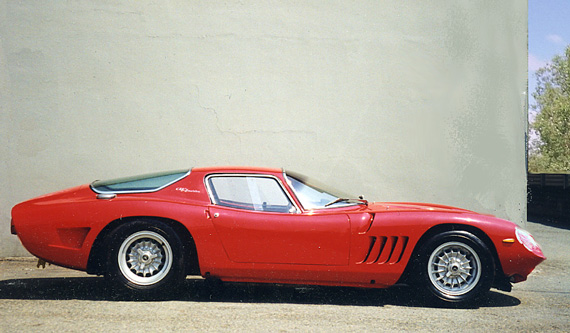
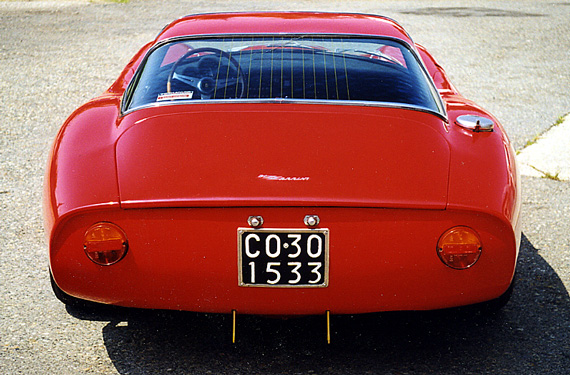
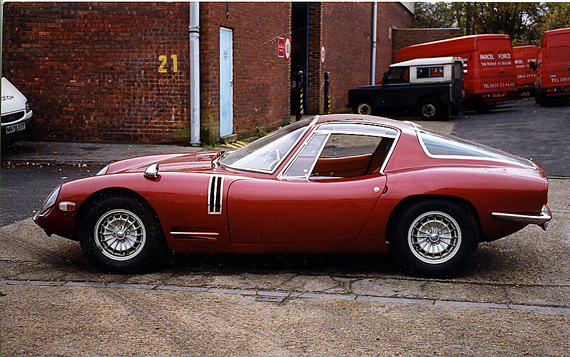
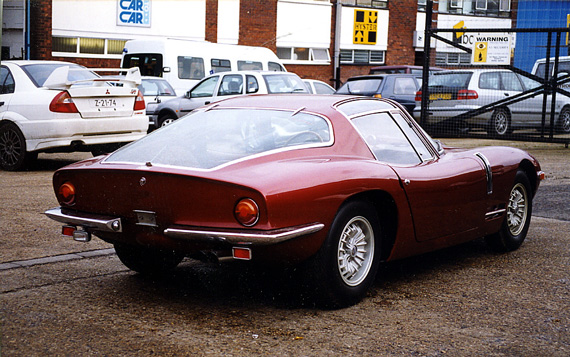
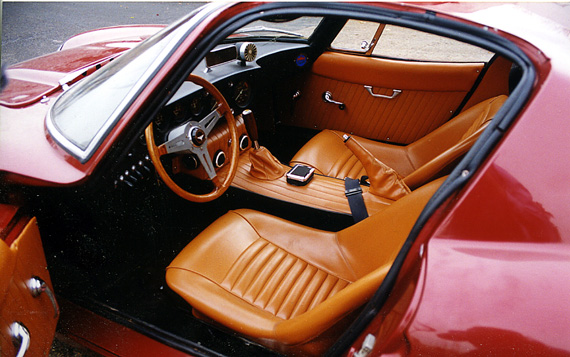
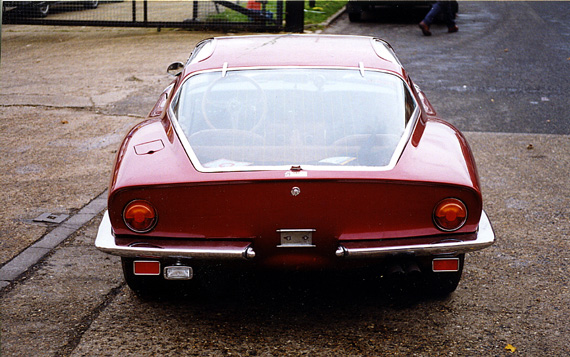
Giotto had the v12 design because he was going to use it for the new company ATS that fell through and he shopped it around finding Lamborghini.
Why would Giotto build a Strada on a 350 Chassis what would it prove? He wouldn’t be able to put it into production and he didn’t have enough money to experiment this way.
Even if he did have the funds why would he use the fiberglass body? The Lamborghini 350 came out in 1964 most Bizzarrini’s were made with aluminum bodies at that time. Also if you look at all Bizzarrini’s they use a special Altissimo tail light different than other cars, your picture show the standard Fiat unit that was never used on Bizzarrini’s
IMO most Bizzarrini Strada’s were similar very few differences .
There were 4-5 P538’s built 1- Gammino’s V12 car crashed in testing, 2 -Gammino’s second car, delivered, 3-The LeMans car 4- Duca D Aosta 5- Mants built w parts used from Gammino’s first car , this car was not built by Giotto
From Mike Gulet:
While I am happy to see Veloce Today publish articles about Bizzarrini I am disappointed with the inaccuracy. Part 2 of the article published on March 11, 2014 is filled with wrong information and the photos of the GT 5300 (or GT America) are photos of a replica car not a genuine Bizzarrini.
The GT America (or the GT Strada) has no relationship to any Lamborghini. The GT 5300 (or GT America) shown here with the Lamborghini engine is not a real Bizzarrini car and certainly not “a prototype for the America, based on a Lamborghini 350GT” as stated in the article. This car looks like a Diomante bodied replica in which someone installed a Lamborghini V12 engine.
The author then says, “I believe this is the only genuine Bizzarrini GT with a Lamborghini V12 motor”. The statements about this car are completely wrong and sound like a pitch to sell the car.
I quote from the Winston Goodfellow book, “Bizzarrini, A technician devoted to motor-racing”, considered the definitive history of Bizzarrini.
On Page 142 the difference between the GT 5300 Strada and GT America are clearly stated, “The main difference between the GT America and Grifo/GT Strada was the GT America had a fiberglass body and IRS while the Grifo/GT Strada had an aluminum body and de Dion rear end”.
This makes complete sense because Giotto Bizzarrini was an engineer and he designed his own chassis and the thought that he would use a Lamborghini chassis for the GT America is absurd. By the time he was creating the GT America he already had the chassis for the GT Strada (which is a design he owned) so it was natural and easy to use this chassis design for the GT America with the modifications described by Goodfellow.
This “Bizzarrini Lamborghini” shown in the article may be a car that was for sale on the US eBay site at one time. An American enthusiast installed a poorly made Bizzarrini body on a Lamborghini 350GT chassis.
A photo of this car above a photo of the car in the article is attached – while the bodies are completely different note the style and location of the gas cap (indicated by the blue arrows) – unlike the gas cap lid found on the top of a genuine Bizzarrini GT Strada (or America) fender which would be a lid painted body color located much more forward and flush with the body.
Compare the style of the gas cap on both cars and the location of the gas cap and it is easy to think this is the same gas cap attached to the same chassis but the car in the article has a more attractive Diomante body installed. I think there is a good possibility that these two cars are the same 350GT chassis. The history of this car then becomes quite different than “the only genuine Bizzarrini GT with a Lamborghini V12 motor”.
I don’t like to see this completely wrong information spread around because someone may believe it and maybe some day some ill-informed person will buy this “genuine Bizzarrini GT with a Lamborghini V12 motor” and think it is real and pay more money than it is really worth.
Another inaccurate statement (but less important mistake) concerns the Bizzarrini design of the Lamborghini V12 engine.
The Lamborghini engine design was definitely not from work Bizzarrini did at Ferrari. This is described in the Goodfellow book on page 40, “The 1.5-liter V12 that Bizzarrini penned in 1962 was completely created during his time with ATS and did not have its origins during his work with Ferrari, as is often erroneously stated. In 1963 he would enlarge the design to 3.5 liters so it could be used in Ferruccio Lamborghini’s 350 GTV prototype and the company’s subsequent production models.”
Imagine what type of legal action Enzo Ferrari could take if he thought one of his engineers took an engine design from Ferrari and sold it to Ferruccio Lamborghini for his Lamborghini cars?
Many of your readers will know this article is filled with incorrect information and some may not.
Well done.
Congratulations for your article. Of course, you can do some mistakes but they are not malicious.
If you want more infos, it s always better to speak with the man who have 50 years experience. Not me but Diomante.
In the last 4 years, Diomante have restore 10 Bizzarrinis for my clients, I m there everyweek and I need to confess that I known nothings compare to him.
Everytime that I see him, he teach me somethings.
I ll bet 10 000 euro with anybody with they can answer the first of his question.
How do we see the difference between Iso and SubAlpina chassis ?
It s easy to critic the journalist who have made some honest mistakes, better to help me to make less and congratulte him for his efforts.
Bye
This machine doesn`t FEEL like a true BIZZARRINI to me!!!